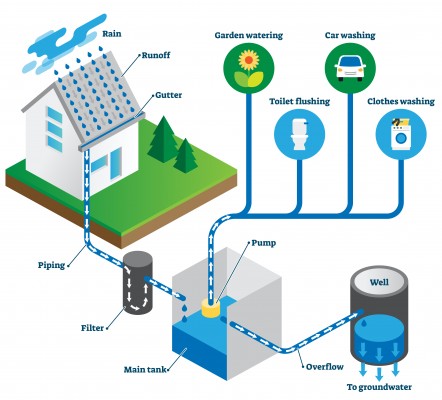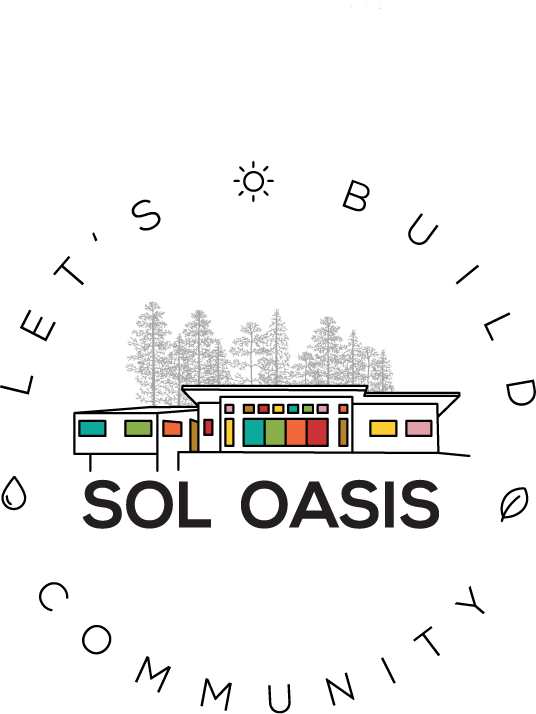"Water is the driving force of all nature” - Leonardo Da Vinci
Water is a precious resource - 97% of the water on Earth is saltwater and only 3% is freshwater. Living in California, we battle chronic droughts and relentless wildfires every year. If water is the scarcest natural resource on Earth, what can we collectively do to slow down its' depletion?
First, it’s good to understand where most of our water consumption comes from. The average household in the United States uses more than 300 gallons per day, about 70% is indoor use (water from the tap, toilet, and appliances) and 30% is outdoor use (water for keeping that lawn impeccably green, or for washing cars). Indoor water use in a typical household looks like this:
![]()
Based on the information we know so far, here’s what we can do to decrease our everyday water consumption:
- Switch to water-saving plumbing fixtures and appliances which can reduce indoor water use up to 20%. Environmental Protection Agency’s WaterSense certification program lists fixtures and appliances such as ultra low-flow toilets/sinks/showerheads, and water-efficient dishwashers/laundry machines.
- Update irrigation and landscaping with low-flow sprinkler heads, water-efficient scheduling practices, and Xeriscape (also known as drought-tolerant landscaping).
- Install water recycling or reuse systems (rainwater catchment systems, onsite water reuse or recycling, greywater systems).
I will talk specifically about rainwater catchment because I believe creating a system requires a low amount of effort for a high reward especially if you have outdoor space. We use so much potable water (drinking water) for almost all our water needs, however water of such high-quality is not necessary for all applications. Rainwater is a relatively high-quality source of water and can be used for non-consumption purposes such as landscape irrigation, toilet flushing, car washing, laundry machine, dishwasher, or fire protection. The system you create can be as simple as collecting rain in a rain barrel or as elaborate as collecting rainwater run-off from the roof into large cisterns to supply an entire household’s non-potable water needs.
We decided to go for the latter and designed a rainwater catchment system that would collect 19,000 gallons annually off the 1,000 square feet roof of our workshop structure to deliver water to our toilets, laundry machine, and outdoor irrigation. You can calculate how much rainwater you would collect in your area using this calculator.

How to design your own rainwater catchment system:
- Site Analysis
- For an easy way to develop a site plan, locate your house on Google Earth - you can use the program’s measuring tools to estimate the dimensions of your property and catchment areas, such as a roof or patio.
- Your map will include high and low points, major site elements (existing structures, trees, large planted areas), and existing drainage flow patterns. The site map will help you design a rainwater catchment system that optimally captures runoff.
- Water Budget
- The decision about how much water to harvest is affected by your desired uses for the rainwater, property characteristics, and project budget. All these factors will determine the size and location of the cisterns.
- Use this Rainwater Calculator to determine your water needs.
Overall, rainwater catchment is an easy thing to do and brings many benefits:
- Help conserve water and reduce overall water demand
- Lower water bills
- Be prepared for future drought
- Provide storage for fire protection
- Rainwater is low in sodium, chloramine, and fluoride-free (better for gardens)
- Become radically self-sufficient - Rainwater can be used as a main source of water or as a backup source to wells, municipal water, and for emergencies
- Rainwater catchment systems can be easily retrofitted to an existing structure or built during new home construction
- Reduce strain on downstream systems
- Achieve net-zero water use, green building, or LEED credits

